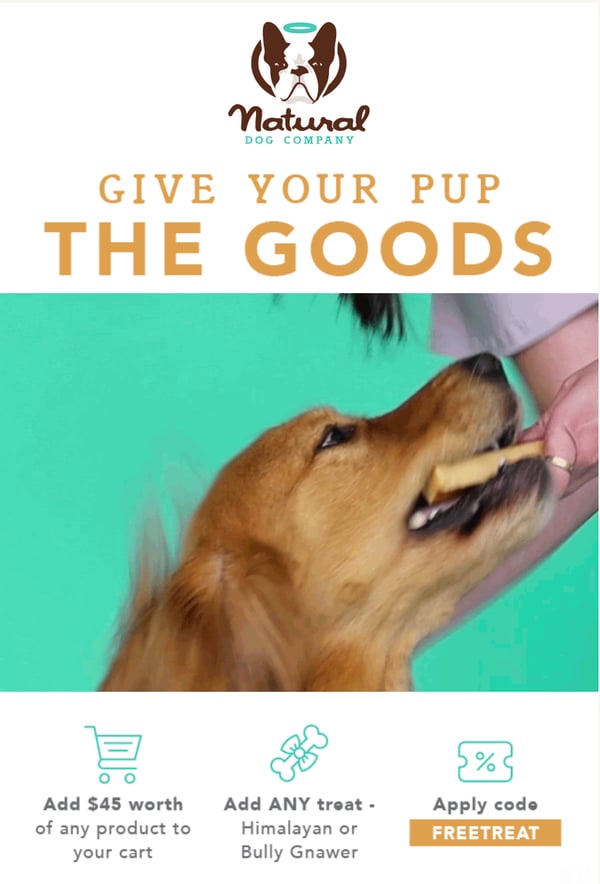As of March 2020, over 804,390 businesses in the U.S. were less than one year old. Combine that with the 31.7 million small businesses vying for customers, and the competition seems even more fierce. So how can you possibly create a marketing strategy that stands out? Diving into a specific niche is the way to set your business apart.
Let's look at how a handful of businesses use niche marketing to their advantage, before walking through the steps to create your own growth-generating strategy.
5 Examples of a Niche Marketing Strategy
1. Flylow Gear
With 9.2 million skiers and snowboarders in the U.S, the pool of potential customers seems wide enough for all to share. But popular brands like Patagonia and The North Face can be found in almost every sports shop, making it hard to convince customers to seek out smaller brands with fewer offerings.
Flylow Gear figured out how to fight through the noise. Instead of targeting all customers interested in winter gear, their niche marketing strategy focuses on backcountry skiers looking for no-nonsense, quality gear. Their products are featured in all the right places — like Powder magazine — to reach their ideal buyers. Even their confirmation emails share that they're a small, mountain-based crew of dedicated skiers.

2. Octavia Elizabeth Jewelry
For ethically-minded consumers searching for jewelry, the most important factor is knowing about raw materials sourcing and product creation. That's because this $300 billion dollar industry has come under fire for using child labor and causing extensive environmental harm.
Octavia Elizabeth understands the need for responsible jewelry. The company's commitment to fair working conditions, legitimate living wages, and ethical production are clearly stated on its website.
Not only has Octavia Elizabeth honed in on customers looking for sustainably-sourced, handmade jewelry who are willing to pay a higher price, the brand has also elevated its niche offering by associating itself with celebrity clientele.

3. Natural Dog Company
Research estimates Americans will spend $99 billion on their pets in 2020 alone. So how can a pet-focused business stand out amongst the thousands of memory foam beds, custom carry-on bags, and dog-friendly ice creams saturating the market?
Natural Dog Company caters to a very specific kind of pet owner: the eco-conscious consumer who pampers their pooch. By giving their organic and all-natural skin care products names like PAWdicure Pack and offering discount codes for free dog treats, they put pups first — which is exactly what their customers do.

4. Pimsleur
Learning a new language can be a struggle, and the options for doing so are definitely overwhelming. Will you really be speaking like a Parisian after spending $1,000 on a program?
Rather than making promises of perfect grammar and flawless accents, Pimsleur focuses on learners who need to improve their speaking and listening skills. The program includes a 30-minute audio lesson every day, with each conversation building off the previous ones. While not the most innovative language-learning app, its audio-first approach is great for customers looking to improve their conversational skills.

5. Photographers Without Borders
It's one thing to entice people to buy a product, but it's another thing entirely to attract donors for a nonprofit. While this type of organization may not seem like the right fit for a niche marketing strategy, it's essential for bringing in donations and volunteers.
Photographers Without Borders has partnered with major organizations like Adobe, Sony, and Patagonia by honing in on a particular marketing technique: storytelling.
By prioritizing ethical storytelling, whether in a social media post, email newsletter, or online webinar, the organization has built a reputation for producing high-quality work that address the 17 UN Sustainable Development Goals and UNDRIP. Plus, their Code of Ethics makes it clear what type of community members and partners they're aiming to attract.

Developing a Niche Marketing Strategy
Now that you have a better grasp on how brands from all types of industries create strategies that drive growth, it's time to shape your own.
Step 1: Know your competition.
Developing a niche marketing strategy is impossible without scoping out your competition. That's because it's crucial to understand your unique selling proposition — what you do differently that makes customers choose your company over another.
Maybe you design ceramic dishware that can't be found anywhere else, or maybe you've developed a tool that makes it easier for marketers to send emails. Whatever is it, find your speciality and craft a story around it.
Step 2: Narrow down your niche market.
Airbnb Co-founder Brian Chesky is famous for having said, “Build something 100 people love, not something 1 million people kind of like.” Put simply, it's better to reach a small group of people who sing praises about your company, rather than a large group who thinks it's just okay.
You can do this by honing in on the right niche market for your business. While this takes time and thought, it's worth the effort to find loyal customers who will gladly choose you over competitors.
For instance, Thirdlove is the first underwear company to offer bras in half-size cups. Through their inclusive sizing options and emphasis on body diversity, they've built a loyal community of over 327,000 Instagram followers.
Step 3: Go where your buyers are.
If your ideal customer spends all of their time scrolling on Facebook, it wouldn't make sense to develop a niche marketing strategy around email campaigns. Enter market research.
You already know who your buyers are, but research helps you go deeper to find out where they shop, how they find products, and what influences their purchase decisions. Once you have that information, you'll get the most return for your marketing dollars.
Step 4: Listen to the word on the street.
Everyone has problems that need solutions. If you listen to people's thoughts about a certain product or service, you can find opportunities to fill in the gaps.
David Barnett did just that when he engineered a solution for constantly tangled headphones. What started out as two buttons glued to the back of a phone case quickly turned into Popsockets, a company that brought in $169 million in revenue just seven years after its founding.
Step 5: Create a unique brand.
Once you've defined your unique selling point, outlined your buyer persona, found out where to reach them, and listened to their problems — all that's left is to build a brand identity. A well-defined brand will help you develop a niche marketing strategy that's authentic to you and attracts ideal customers.
For instance, Etsy's position as the marketplace for independent artists has attracted more than 138 million buyers. In a 2020 TV commercial, the brand touched on the pandemic and used emotional marketing tactics to encourage support for small businesses that sell through the platform.
Creating a niche marketing strategy that drives growth for your business is more than creating a social media ad or sending a weekly email promotion. If you take the time to learn about your customers and differentiate your brand, you can develop a strategy that attracts the right buyers and helps you hit your growth goals.
How to Develop a Niche Marketing Strategy that Drives Growth was originally posted by Local Sign Company Irvine, Ca. https://goo.gl/4NmUQV https://goo.gl/bQ1zHR http://www.pearltrees.com/anaheimsigns
No comments:
Post a Comment